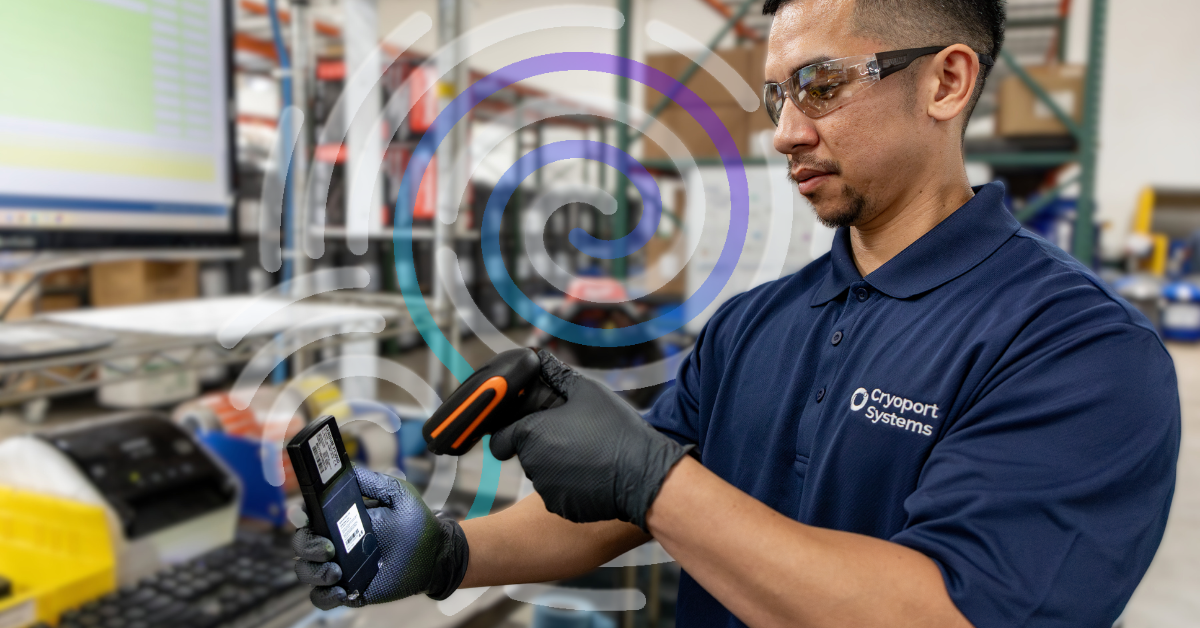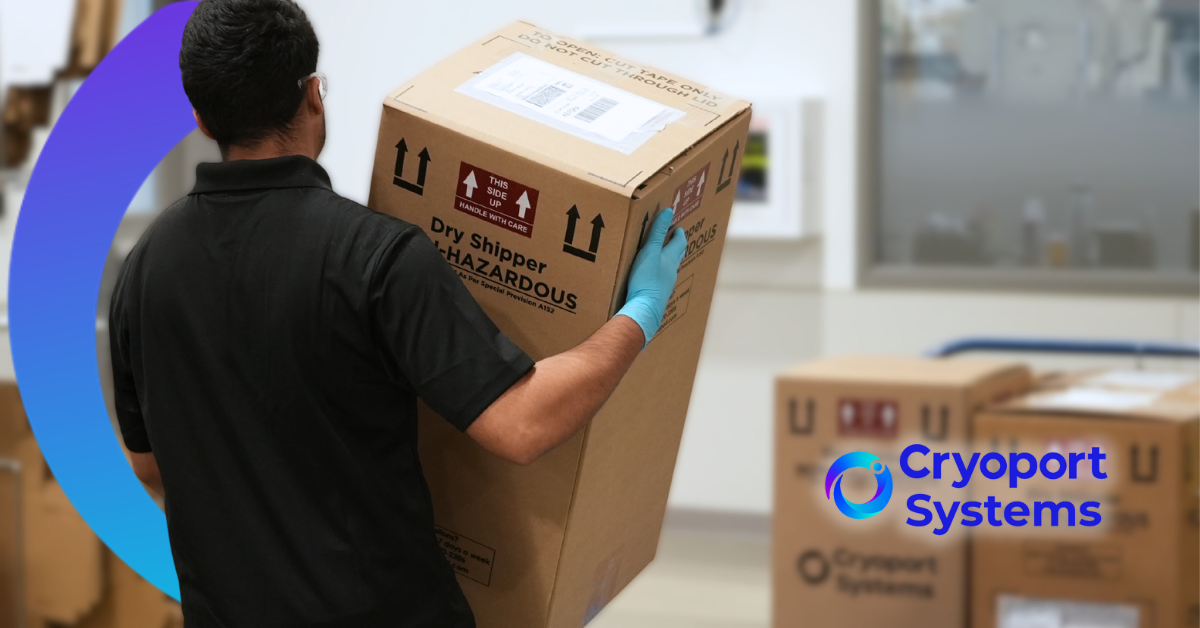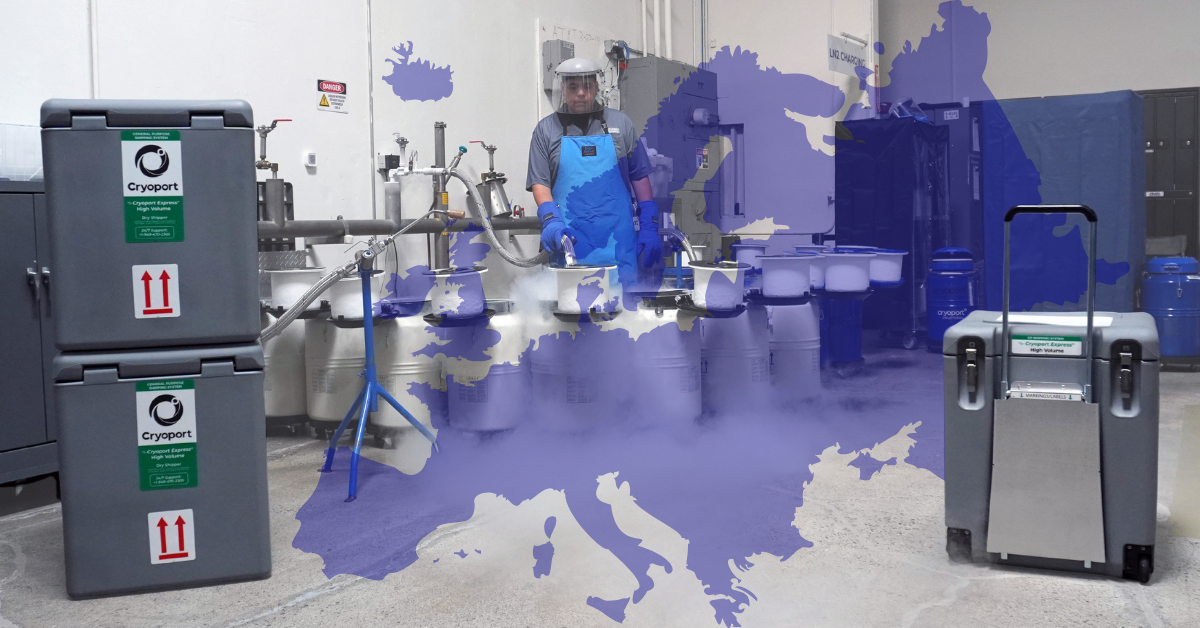Built or Bought? Why Biotechs are Outsourcing Supply Chain Infrastructure
For companies developing advanced therapy medicinal products (ATMPs), building an in-house end-to-end supply chain may seem like the ultimate sign of maturity. But in today’s resource-constrained market, biotech leaders are increasingly asking themselves whether it’s better to build, or to buy.
From startups operating on limited funding to global biopharma players scaling into new markets, outsourcing supply chain infrastructure is becoming more than just a cost saving tactic. By partnering with specialized providers, developers gain instant access to global networks, regulatory expertise and compliance, and technical capabilities that would take years and significant capital to build internally.
In her Beyond Biotech interview with Labiotech, Alison Pritchard, VP of Business Development for EMEA at Cryoport Systems, described why this trend is accelerating.
“We are seeing a strong trend toward outsourcing, and I believe that will continue over the years to come,” Alison said. “As therapy developers scale globally, the complexity of managing supply chains across diverse regions becomes increasingly difficult to handle in-house.”
The Outsourcing Advantage
Managing an ATMP supply chain involves far more than moving material from point A to point B. Developers must meet strict temperature requirements, navigate regulatory complexity, manage customs clearance, coordinate with a diverse network of clinical sites, and ensure complete Chain of Compliance® at every step. They need standardized protocols for things like cryopreservation of starting materials, extensive biostorage capabilities, and repeatable protocols that remove site-to-site variability. Doing all of this in-house requires significant infrastructure and highly trained personnel alongside robust Standard Operating Procedures (SOPs) and aligned processes, elements that most companies simply can’t develop quickly enough to meet their growth targets.
“Outsourcing allows developers to plug into a global and pre-validated network,” Alison explained. “It can give immediate access to purpose-built systems and highly trained teams without the need to develop that in-house.”
This advantage extends beyond speed. Established providers like Cryoport Systems bring institutional knowledge from managing thousands of shipments across multiple therapy types, geographies, and regulatory jurisdictions. That experience allows for anticipating potential roadblocks and creating proactive solutions, a capability that can take years for an internal team to develop.
From Fixed Cost to Flexible Resource
In-house infrastructure comes with high capital costs and long lead times. Building a GMP-compliant storage facility, hiring and training teams, validating shipping equipment… this can all take months or years before operations can ever begin.
Outsourcing flips this model. Developers can move from a fixed-cost model to a flexible, pay-as-you-go structure, allocating budget only to the services they need and when they need them. This flexibility is particularly valuable for companies whose therapy pipelines may pivot rapidly in response to things like clinical trial outcomes or regulatory approvals or changes.
“Instead of using CapEx to build storage facilities or shipping fleets, outsourcing converts that upfront cost into a flexible operating model,” Alison pointed out.
For emerging biotechs in particular, this approach frees up capital for R&D and clinical programs. For established companies, it prevents overinvestment in facilities or equipment that may only be needed at peak capacity.
Alison emphasized that outsourcing is not limited to early-stage companies, saying, “We’re seeing both early-stage biotechs and more established players look to outsource, though often for different reasons.”
Startups often lack the licenses, facilities, and in-house expertise to manage GMP storage or complex cold chain requirements. Outsourcing allows them to focus resources on product development and clinical milestones. Established companies, on the other hand, may already have operational capacity but still outsource when scaling into new geographies or adding new therapy types, or managing specialized tasks such as sterile kitting, cryopreservation of starting materials, or Qualified Person (QP) release in Europe.
Across both groups, the common thread is flexibility and the ability to scale up, scale down, or pivot in response to changes without the burden of fixed infrastructure.
Why Supply Chain is More Than a Vendor Relationship
For Alison, outsourcing decisions shouldn’t be purely transactional. For ATMPs, the supply chain is a critical enabling factor of therapy success, it’s not just a supporting function. That makes choosing the right partner a strategic decision.
“Don’t just select a vendor. You want a partner who understands the complexities of advanced therapies and who will walk that journey with you,” she advised. “A good partner will challenge you in the right ways, help you plan for what’s next, and align with your long-term vision.”
When a partner truly understands the goals of the therapeutic developer, they can design a supply chain that not only meets current needs but also anticipates future ones, whether that’s supporting scale-up, expanding globally, or preparing for commercialization.
Reducing Risk While Scaling Globally
The global trade environment is in flux. Regulatory frameworks are evolving, geopolitical tensions are influencing cross-border flows, and clinical networks are increasingly expanding into new regions. In this context, outsourcing becomes a risk management strategy above and beyond its operational convenience.
“Outsourcing becomes a strategic necessity to de-risk any clinical or commercial plans,” Alison said. “Working with partners that already have robust global operations allows developers to maintain timelines and mitigate disruptions without impacting product quality or integrity.”
Cryoport Systems leverages data from over a million shipments worldwide to identify patterns, anticipate bottlenecks, and effectively design risk-averse supply chain strategies. That knowledge base is difficult for any single developer to replicate in-house.
Integrating End-to-End Capabilities
Many outsourcing providers focus narrowly on transportation. Cryoport Systems takes a broader view, offering services that cover the entire therapy lifecycle from vein to vein.
“We’re not only a logistics provider,” Alison emphasized. “We’ve evolved into an end-to-end supply chain provider.”
Cryoport Systems’ integrated platform includes cryopreservation of starting material, GMP-compliant biostorage, secondary packaging and labelling, kit production, QP release, and more. This single-vendor model reduces the number of handoffs between parties while simplifying communication.
Early Engagement Creates Long-Term Payoff
Perhaps Alison’s most important piece of advice for companies considering outsourcing is to start earlier than you think you need to. Bringing in a partner at the pre-clinical or early clinical stage allows the supply chain to be designed for scalability from the outset.
“Supply chain planning isn’t just about getting a product from A to B,” she said. “It’s about safeguarding quality, ensuring compliance, managing risk, and setting the foundation for scale.”
This proactive approach prevents costly retrofits and ensures that as therapy volumes grow, the supply chain can grow with them.
Ultimately, outsourcing creates space for innovation. By offloading infrastructure management, developers can keep their focus on advancing science while navigating regulatory milestones and, ultimately, reaching patients.
“If you build a flexible and forward-looking supply chain early, you’re reducing both short- and long-term risks,” Alison pointed out. “And you’re avoiding the cost and complexity of retrofitting solutions later.”
In an industry where every day counts, the right outsourcing partner can mean the difference between hitting a milestone on time and missing it entirely… and between a therapy reaching patients, or not.
You can listen to the full podcast interview with Alison Pritchard here.


